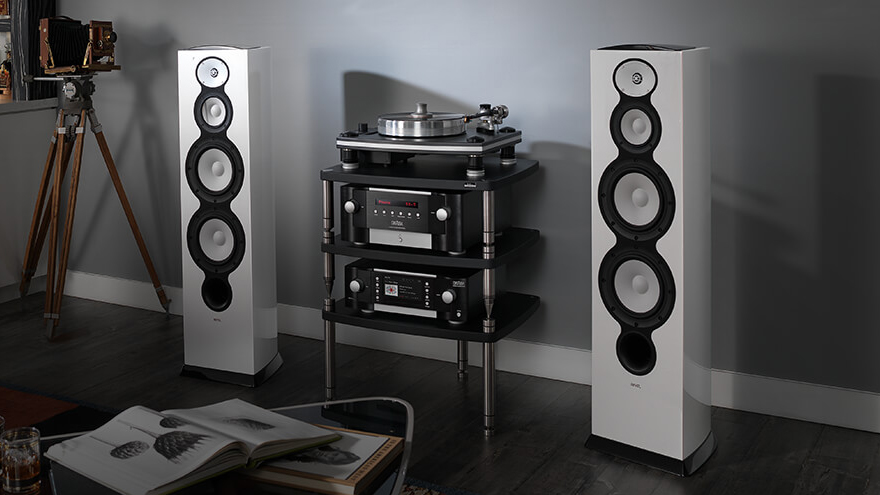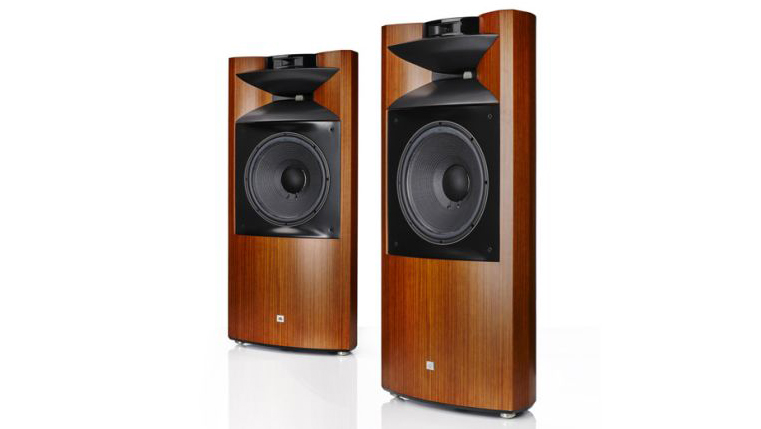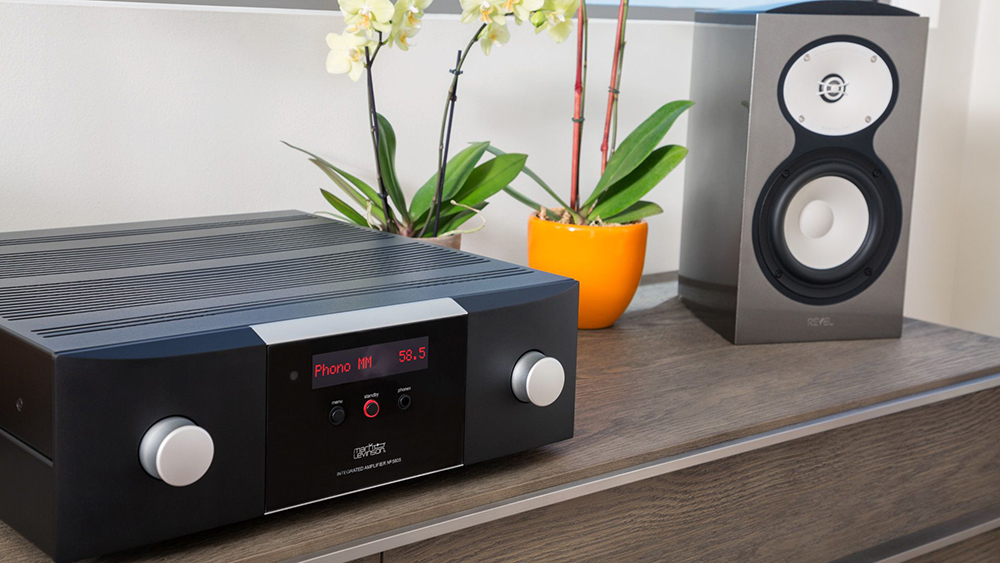
Harman Luxury Audio could be the biggest name in high-end hi-fi that you've never heard of. Or at least don't know much about. You will, however, know the brands it owns: Arcam, JBL Synthesis, Lexicon, Mark Levinson and Revel. These are simply some of the biggest names in high-end audio.
Founded in 1953 as Harman Kardon by Sidney Harman and Bernard Kardon (company names were simpler back then), and later rebranded as Harman International, the company has grown from its hi-fi roots into a hugely powerful electronics behemoth. This culminated in an $8bn acquisition by Samsung in 2016 – that's a long way from the Harman Kardon Festival D1000, launched back in 1954, as the company's, and one of the world's, first AM/FM hi-fi receivers.
The respected Harman Kardon brand still continues to produce AV products to this day, and from its cluster of high-end names, it's clear that hi-fidelity sound remains at the heart of what Harman does to this day.
We spoke to Jim Garrett, Senior Director, Product Strategy and Planning at Harman Luxury Audio, to find out how the company works, the ways in which the brands work together and what's coming next.

What Hi-Fi?: What does the group as a whole look like? How hard is it to keep the brands' identities separate?
Jim Garrett: The Luxury Audio business unit consists of a dedicated team of people focused on all of the brands. We have three engineering centres, including our acoustics facility in Northridge, California, our electronics facility in Cambridge, UK, and a second electronics facility in Shelton, Connecticut that is focused specifically on Mark Levinson products.
They are all treated as independent brands with each of them having a unique identity and technology platform, based both on its heritage and its future direction. Since most of them do not overlap in their scope, it's fairly straightforward to keep them separate.
The latest hi-fi, home cinema and tech news, reviews, buying advice and deals, direct to your inbox.
JBL has the longest history with Harman, going back to 1969. How did the JBL Synthesis brand come about? And what makes it special?
JBL Synthesis was created in 1992 and born out of JBL’s industry-leading commercial cinema business. We offer turn-key, custom-tailored immersive audio systems for the discriminating enthusiast. From the inception of the brand, a JBL Synthesis system is a collection of premium audio components designed, engineered, and calibrated to work together as a system. No other system benefits from the patented technologies and decades of research that are the foundation of our systems.

Mark Levinson is undoubtedly one of the biggest names in high-end hi-fi. How has it stayed ahead of the pack?
We continue to stay true to the original mission of the brand, but have worked to expand its appeal to a wider audience by incorporating the latest technologies. One example is the level of connectivity and control found on the No.5805 integrated amplifier.
That model has our proprietary PrecisionLink II 32-bit / 384kHz high-res DAC, Bluetooth with aptX-HD support, our Main Drive class A headphone amplifier, MQA full-decoding on all digital inputs, a web page UI for setup and control, ML app control and control for third-party automation, and of course our class A Pure Phono input for MM/MC turntables. Truly something for everyone!
What would you say Revel’s key USP is?
Revel is unique in that it was created in-house to be a loudspeaker complement to the Mark Levinson brand. The goal was to bring to bear the full measure of acoustical research and development found within the Harman enterprise. A mainstay of the brand has been tweeter waveguides and high-order crossover slopes that have been responsible for the remarkable acoustic performance shown across the portfolio.

What’s next for Lexicon?
We just released one of the most advanced loudspeakers on the planet: the Lexicon SL-1. It is a fully-active design that doesn’t require a stack of outboard electronics to drive. It also includes our patented Soundsteer technology that allows the listener to not only adjust the size of the sweet spot, but to move it anywhere in the room. It is a remarkable product that will change people’s expectations of what a premium loudspeaker can deliver. The technology is scalable so you can expect to see it in future products.
In 2017, Harman acquired Arcam. What’s the plan for the brand now it is part of Harman Luxury?
Arcam now has access to Harman’s unparalleled global resources. It has allowed us to completely revamp the entire range of products with a dozen new models having been brought to market in the last 18 months or so. Being a part of Harman has simply allowed us to accelerate the product cycle and expand into new technologies that were previously unavailable.
- Arcam reveals complete new AV receiver range at CEDIA Expo
- Arcam launches flagship SA30 integrated amplifier
Measurement or listening – which takes priority when designing products?
It is a combination of the two. Harman has decades of subjective and objective listener research that is the foundation of our acoustics design. The research has resulted in what we call the “Harman Curve” – a given target response that all of our systems are designed to meet. Our engineers can be assured that if a system meets this target in objective measurements, it will always succeed on the subjective listener tests, whether it's double-blind in our lab or in a real-world A-B comparison.
While our engineers have world-class resources at hand and they will always use those to guide them down the correct path, we still use two of the best calibration and measurement tools we have – the two ears on the sides of our heads!
What music is used during the Harman testing process?
There is a wide variety of music that we use during development. In some cases, for example the double-blind tests, there are a handful of specific cuts that get used as we need that repeatability and consistency. In other tests, we use a library of carefully curated tracks that have been proven to bring out the best and worst in products. Familiarity with the music is important so that you know when it sounds correct.
What do you say to people who think high-end audio products can’t justify the cost?
The old saying 'you get what you pay for' is certainly true in a lot of respects. No matter the price point, engineering a product is inevitably a series of compromises. The development team must make the correct choices to address the target market for the given product.
Lower priced products will naturally have significantly more compromises due to their cost constraints. The limitations imposed will ultimately affect acoustic performance, build quality, cosmetic appeal, and more. In the end, price justification is obviously a personal thing, but it should be easy to see that higher-priced products are naturally going to able to deliver higher owner satisfaction by eliminating compromises and exceeding expectations.
Premium products are experiential and we see time and time again that most people aren’t aware of the level of performance that is available because they have never been exposed to it. Once they have that first taste, only the best will do.

Joe is the Content Director for What Hi-Fi? and Future’s Product Testing, having previously been the Global Editor-in-Chief of What Hi-Fi?. He has worked on What Hi-Fi? across the print magazine and website for almost 20 years, writing news, reviews and features on everything from turntables to TVs, headphones to hi-fi separates. He has covered product launch events across the world, from Apple to Technics, Sony and Samsung; reported from CES, the Bristol Show, and Munich High End for many years; and written for sites such as the BBC, Stuff and The Guardian. In his spare time, he enjoys expanding his vinyl collection and cycling (not at the same time).
